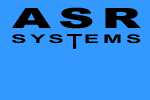

 |
|
 |
|
Bolivar,
Adelaide, Australia
Source Number: 2.1.3 Source Description Dillon, P., Pavelic, P., Toze, S., Ragusa, S., Wright, M., Peter, P., Martin, R., Gerges, N., and Rink-Pfeiffer, S. "Storing Recycled Water in an Aquifer at Bolivar: Benefits and Risks." Proceedings for the International Association of Water Quality Conference on Diffuse Pollution. Perth, Australia. May 1999. Dillon, P., Toze, S., Pavelic, P., Ragusa, S., Martin, R., Gerges, N., and Rink-Pfeiffer, S. "Addressing the Risks in Storing Recycled Water in An Australian Aquifer." Proceedings of the 9th Biennial Symposium on the Artificial Recharge of Groundwater. Tempe, Arizona. June 10-12, 1999. Key Words Executive Summary For this project, wastewater injected into the aquifer at the Bolivar site is chlorinated prior to injection. Chlorination levels are such that there will be no residual chlorine in the injected wastewater. Consequently, there is the possibility of large and rapid increases in microbial numbers in the aquifer due to the injection of high nutrient water. A major concern is the persistence of introduced microbial pathogens such as enteric viruses and the increase of bacterial opportunistic pathogens. Opportunistic pathogens include bacteria such as Aeromonas hydrophila, Pseudomonas species such as Pseudomonas aeruginosa and Pseudomonas stutzeri, and various Flavobacterium species and former Flavobacterium species. These bacterial strains have been implicated in a range of diseases and infections, particularly in the very young and old, the ill, and the immuno-compromised. Many opportunistic pathogens have been commonly detected as members of the natural microbial community in many different environments, including groundwater. Thus, they do not have the impediment experienced by introduced microorganisms, which have to compete for nutrients and ecological niches with an established indigenous microbial population. Many opportunistic pathogen species are also capable of using a wide range of organic compounds for growth, thus could be capable of rapid growth due to the addition of a highly nutrient-rich water such as treated wastewater. This set of laboratory experiments, using aquifer material and groundwater obtained from the T2 aquifer and undertaken under conditions (oxygen status and temperature) similar to those that exist in the T2 aquifer, were designed to determine the incidence of opportunistic pathogens in the T2 aquifer at the Bolivar ASR site and to determine their growth potential in the presence of wastewater. Other experiments are currently being undertaken to determine the survival potential of selected microbial pathogens in the T2 aquifer. These are being done by suspending the pathogens in groundwater and enclosing them in small diffusion chambers. These chambers are essentially a small tube enclosed at either end by a size-limiting membrane, which allows groundwater to pass through the chamber but prevents the pathogens from being lost into the aquifer. The results obtained to date indicate that pathogen survival in the aquifer within the injection zone-of-influence is limited, and that the indigenous groundwater microorganisms are the major factor influencing the pathogen decay. The research project at Bolivar near Adelaide is currently underway to answer these questions and to assess technical viability, environmental sustainability, and commercial/economic feasibility at this site, and where possible in a generic sense. This project is addressing the benefits and risks of ASR and how these are being resolved at Bolivar. The project team seeks to extend this work to other sites and to expand the range of applications and scientific knowledge of aquifer processes. Graphics and
Tables Contact Information Dr. Peter Dillon Source Documents Source Number: AF-1 Source Description Key Words Executive Summary Decay rates for E. coli and Streptococcus faecalis ranged between 0.02 - 0.09 log removal/day and between 0.06-0.11 log removal/day, respectively. Inactivation rates were higher when bacteria were placed in ambient groundwater, compared to injected storm water. Porous media had a protective effect on survival of the microorganisms tested. The percent of live Giardia decreased between 1.5 to 11 times in the first seven days of being placed in groundwater. To our knowledge, this is the first attempt to determine in situ decay rates for Giardia in groundwater. It is also one of the first attempts to determine in situ inactivation of indicator organisms using diffusion chambers. Graphics and
Tables Contact Information Dr. Peter Dillon Source Documents |